Project Presentation
The first step is to prepare a short and informal (5-minutes, 2-3 slides) public presentation of your research group's plan for a new scanning experiment. The Project Presentation meetings will be attended by the scanner center director, junior MR physicist (TBA new Physics hire), and finally, any interested members of the local scanning research community. These meetings are scheduled on an ad hoc basis when 2 or more new presentations are pending (email the director to get in the queue).
Project presentations provide an opportunity to vet and refine experimental procedures via suggestions from more experienced neuroimaging researchers. They also provide a way for members of the community who have never scanned before to learn the ropes. Finally, these meetings are crucial for building a coherent and friendly neuroimaging community around the new center. The public discussion often results in helpful modifications that improve the quality of these (expensive!) experiments.
Piloting
When preparing a new experiment, it is often necessary to do some basic pilot work to set up scanner pulse sequences or new stimulus/response equipment and programs. We break down pilot testing into informal equipment/stimulus/sequence set-up and pilot scans where human data is acquired.
Equipment/stimulus/sequence test (no MRI acquisition or phantom-only)
Once your project has been presented and approved, it is a good idea to test equipment and/or stimulation programs to ensure they are working correctly and to get scanning protocols in place.
We encourage people to do this when the scanner is free on a first-come, first-served basis. Consult the online booking schedule or ask scanner center staff if the scanner is free (during normal operating hours, 9AM to 6PM).
You don't have to book this time and you won't be charged. Be aware, however, that if the scanner gets booked, even at short notice while your testing is going on, you will have to leave immediately.
Acquiring Human Pilot Data
After equipment, stimuli, and sequences are in place, it is a good idea to test your experiment with a knowledgeable participant or two from your lab and to make sure your data and design are working as you think they are (this mainly applies to functional MRI studies).
Scanner hours for this kind of pilot testing should be factored into the number of hours requested for the project, and should be booked as a regular scan.
Lab members (or yourself) are ideal subjects from which to obtain informed feedback on paradigm presentation, performance, and pacing. Screen them as with any regular subject.
Scan charges
Billable hourly rates for scanning research subjects are $585/hour (internal SDSU funding source) and $600/hour (San Diego Research Foundation funds). A higher hourly rate is charged for external users.
Forms
Get Screening Form PDF 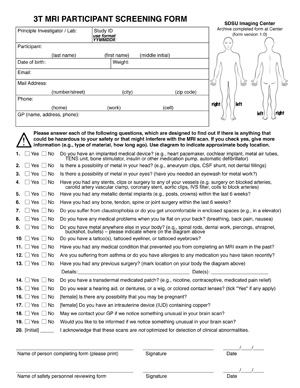
|
Get Parking Directions 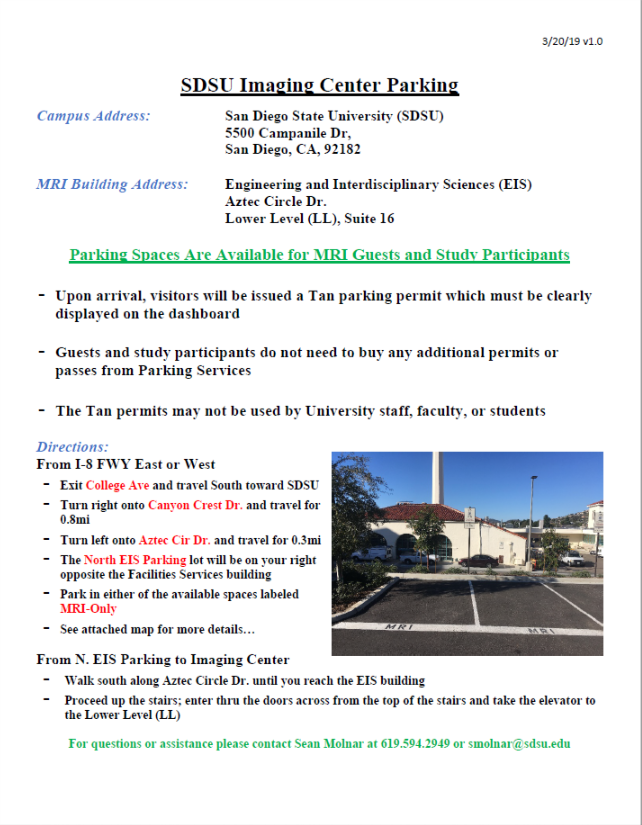
|
KinetiCor Guide 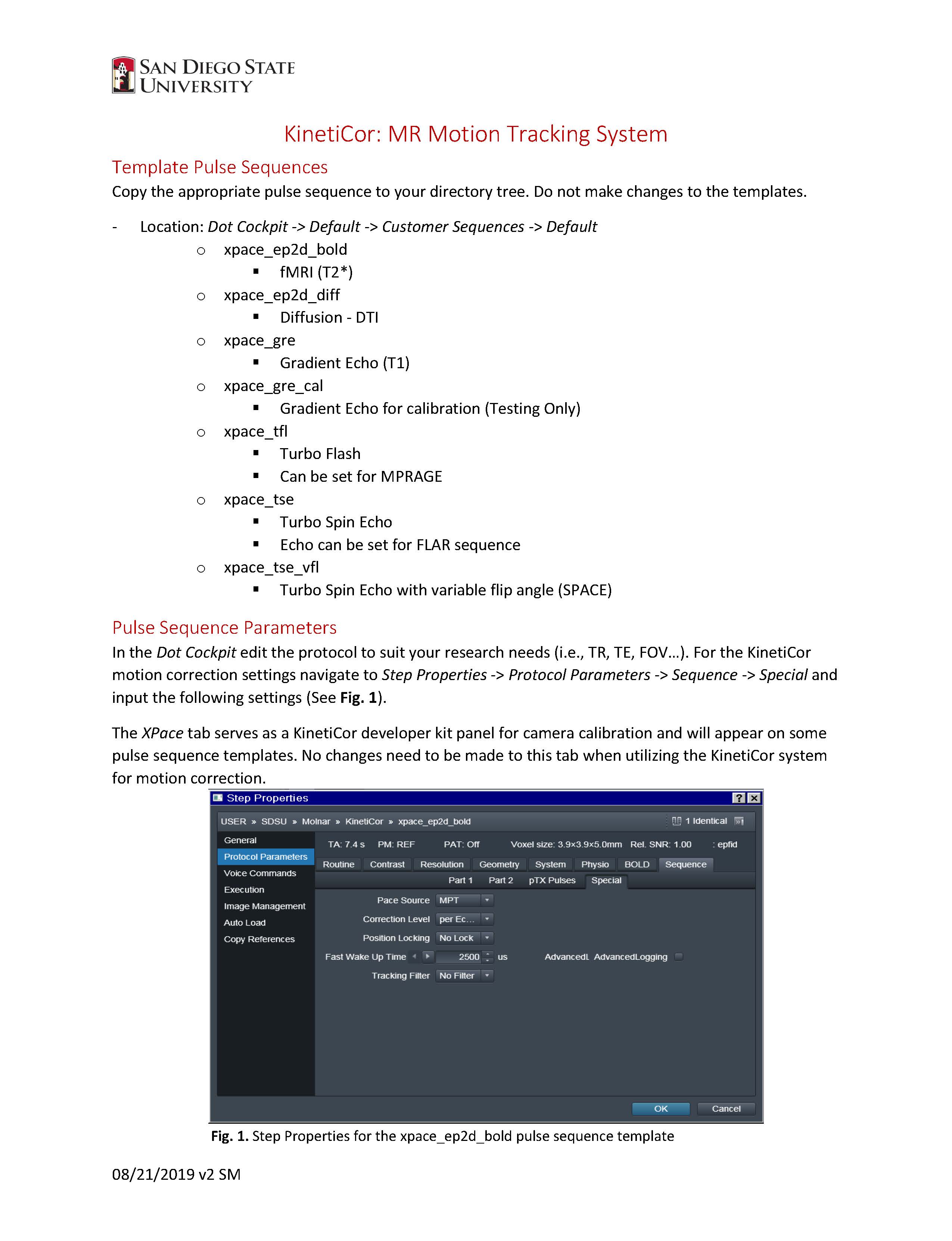
|
MRI Operator's Manual 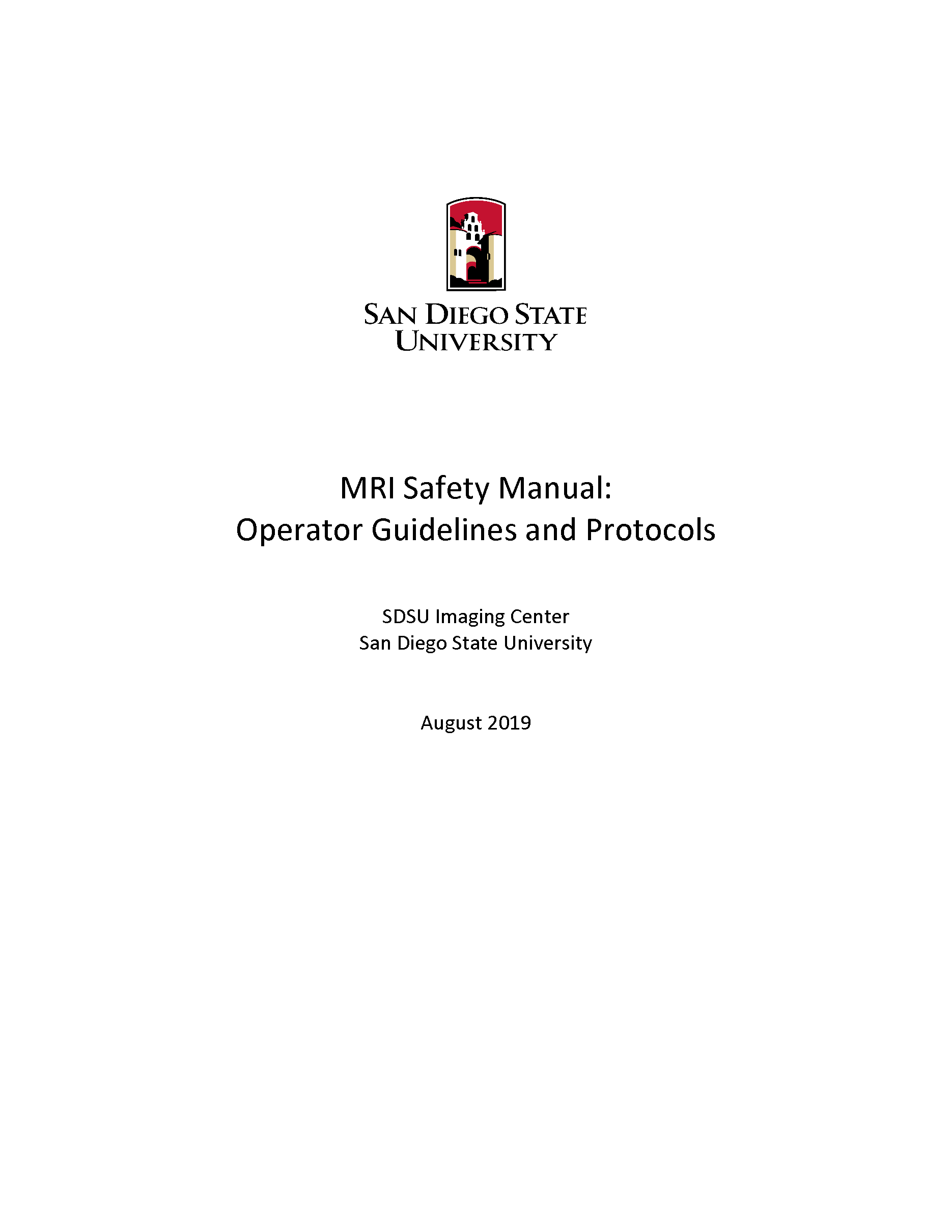
|
COVID-19 Screening Checklist 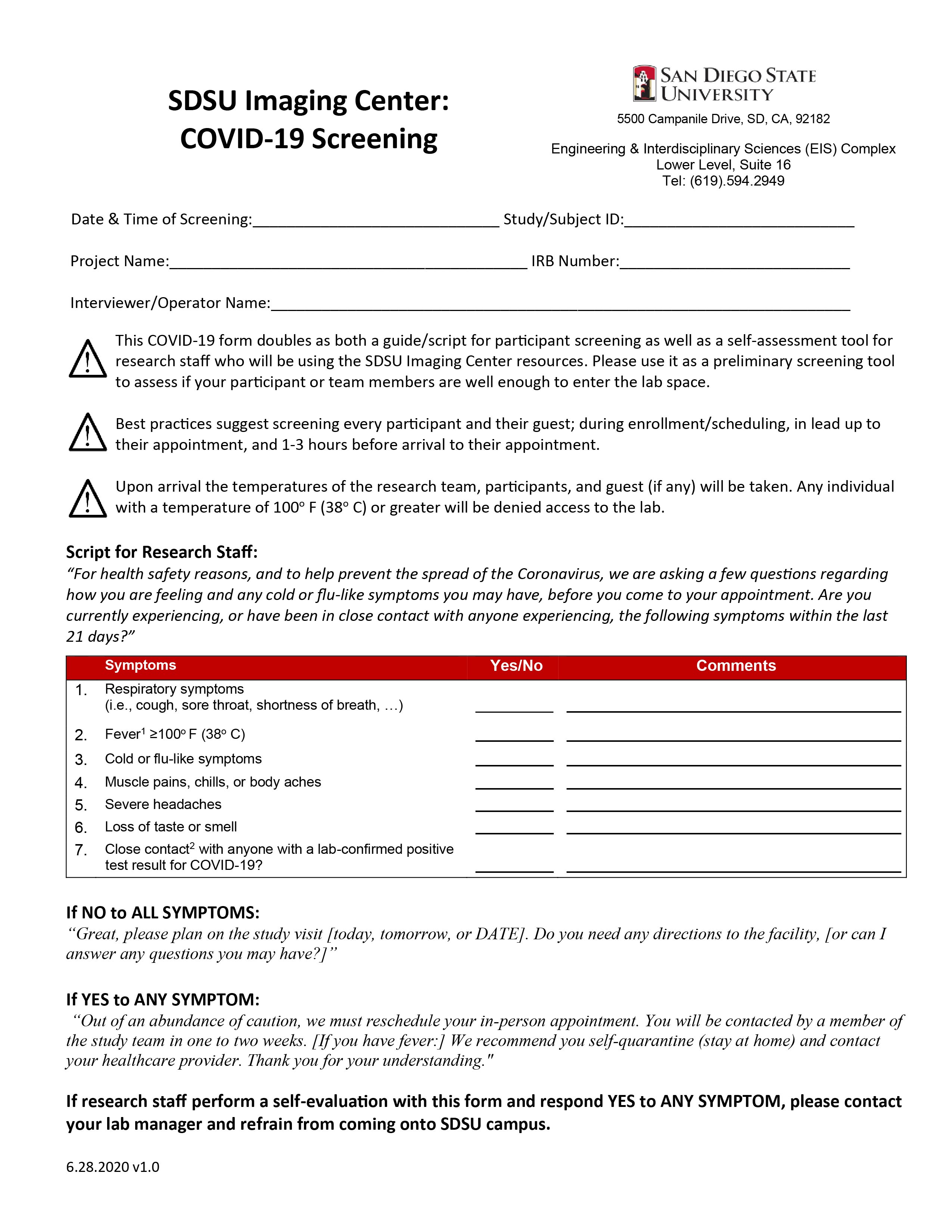
|
COVID-19 Safety Manual 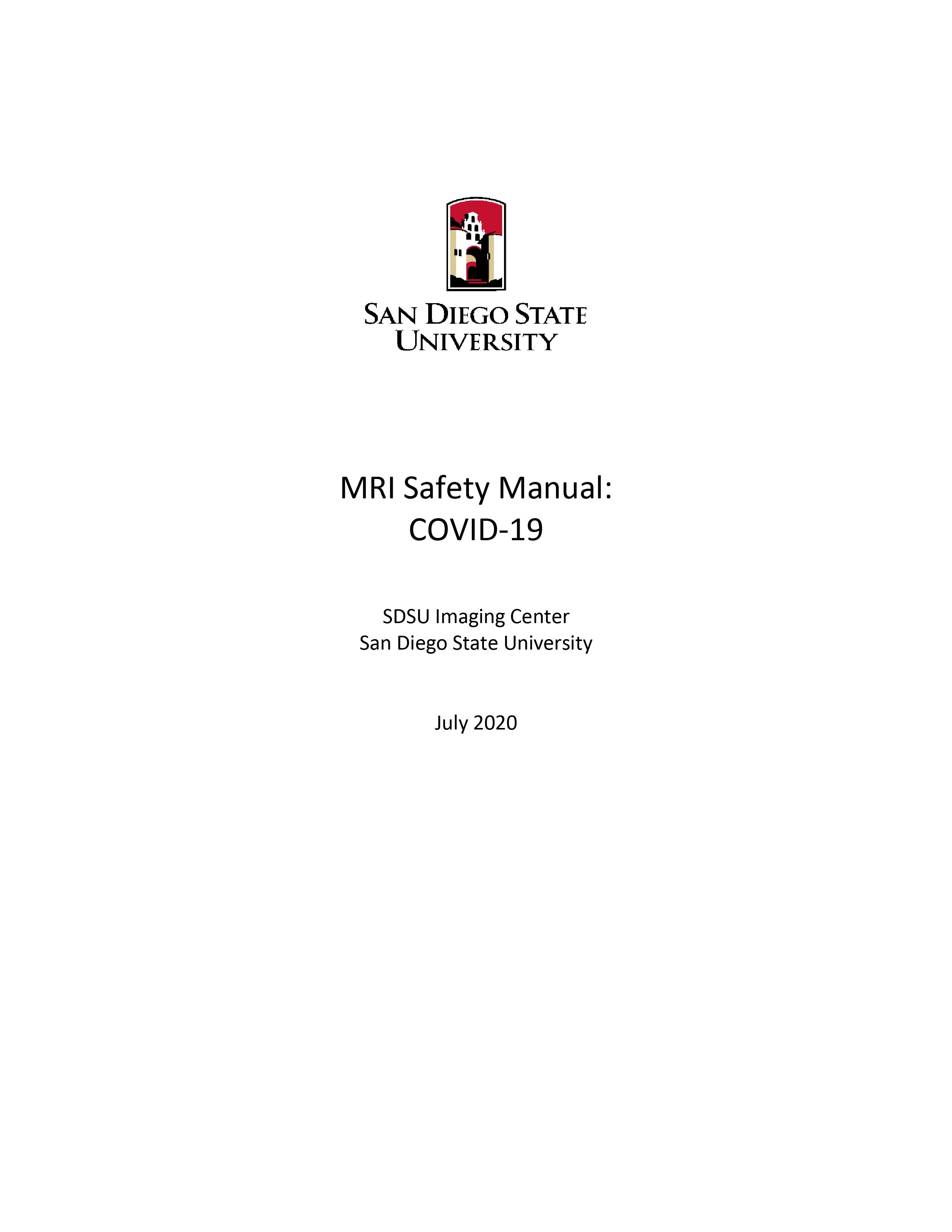
|
COVID-10 Cleaning Checklist 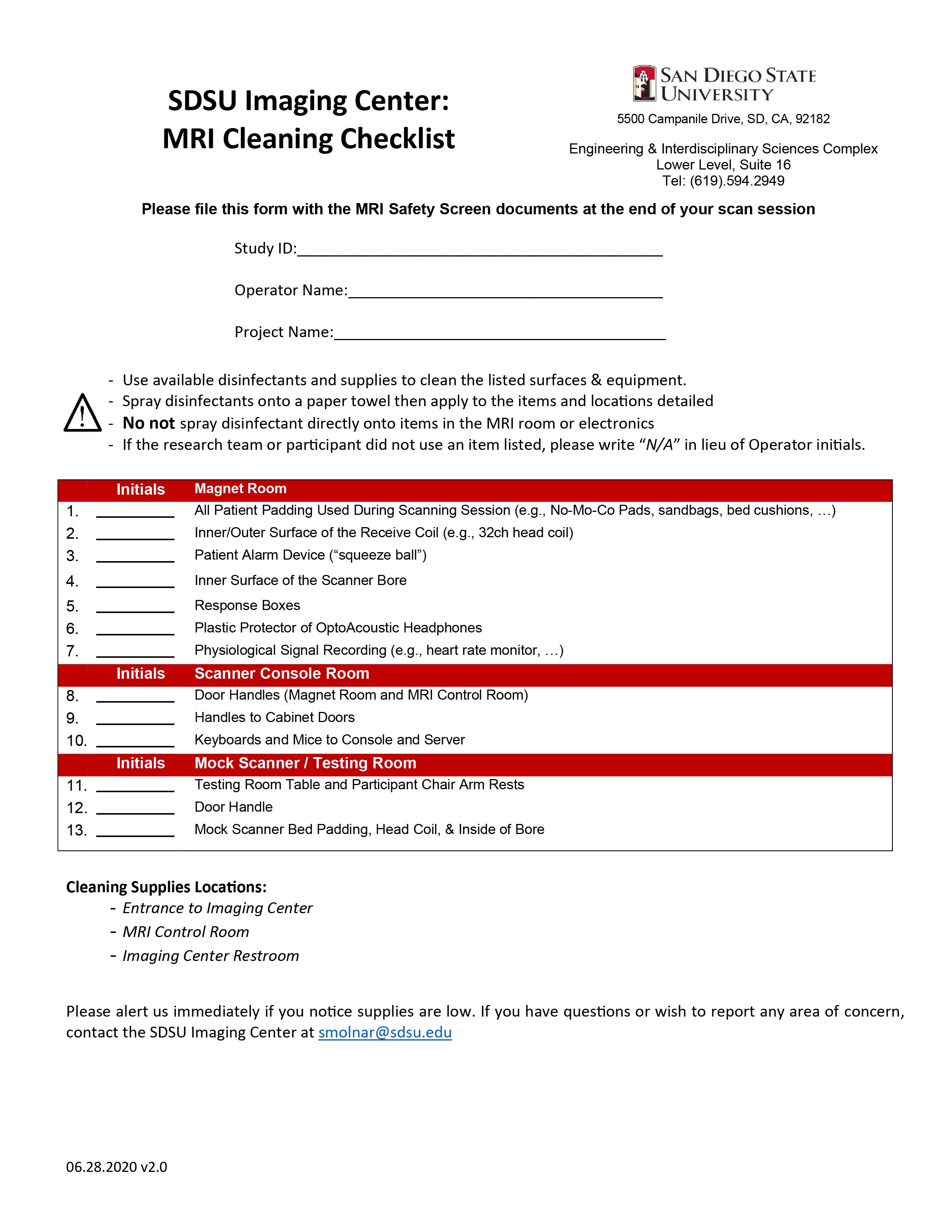
|